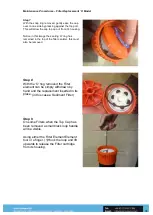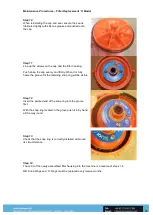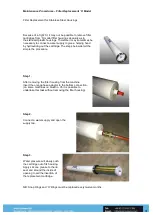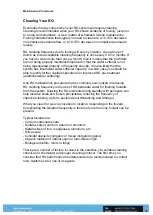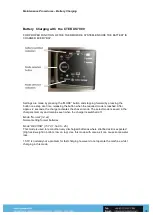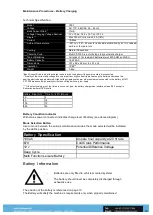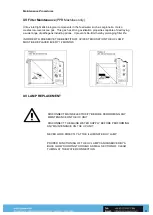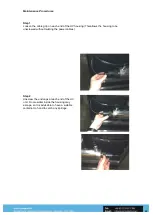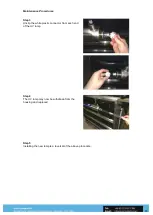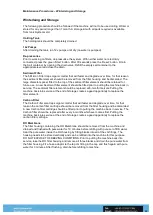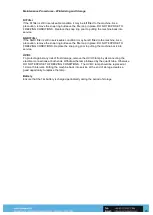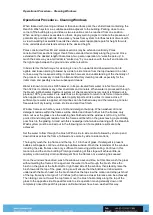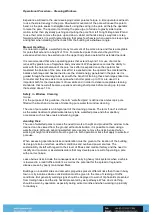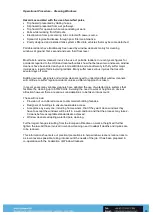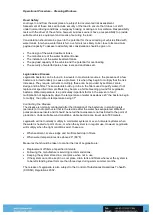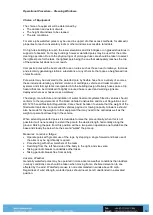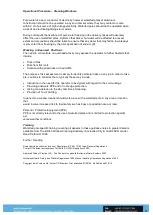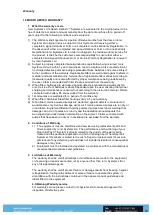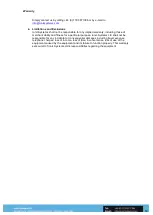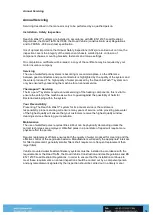
Operational Procedure – Cleaning Windows
49
Road Safety
Journeys to and from the workplace are subject to documented risk assessment.
Assessment of these risks will include security of the load to ensure that it does not shift
under normal driving conditions, emergency braking or during a minor collision. Responsibility
rests with the driver of the vehicle, however business owners have a responsibility to provide
suitable vehicles, equipment and means of securing the load.
Consideration should also be given to the potential for the overloading of vehicles fitted with
water tanks, for when a water tank is full, a vehicle is less likely to be close to its maximum
payload capacity
.
To assess road safety risk consideration should be given to:
•
The design of the water treatment tanks.
•
The manufacture of the water treatment tanks.
•
The installation of the water treatment tanks.
•
The payload capacity of the vehicle and the potential for overloading.
•
The security of waterfed poles, hose reels and ancillaries etc.
Legionnaires Disease
Legionella bacteria can be found in low levels in most water sources, the presence of a few
bacteria is in itself unlikely to cause a problem, it is when they begin to multiply that the risk
increases. They require nutrients to multiply, these can be provided by sediment, scale,
sludge and biofilms. These materials build up in the in the filters used to purify water, if not
replaced at specified intervals filters may become a fertile breeding ground for Legionella
bacteria. Water temperature is a particularly important factor in the survival of and
multiplication of Legionella, when the temperature of water rises above 20° the bacteria begin
to multiply, the optimum temperature being 37°.
Contracting the Disease
The disease is normally contracted after the inhalation of the bacterium in small droplets
(aerosols) or in droplet nuclei that is the residue after the water has evaporated. Waterfed
poles produce aerosols and it should be noted that aerosols are not restricted to the point of
production. Under suitable wind conditions, viable bacteria can travel up to 500 meters.
Legionella will not normally multiply in cold water systems or even hot water systems when
the water is heated at point of use, or when the system is in regular use. However Legionella
will multiply when the right conditions exist, these are;
•
When sediment, scale, sludge and bio films build up in filters.
•
When water temperatures rise above 20° (68°F)
Measures that should be taken to control the risk of Legionella are;
•
Replacement of filters at specified intervals.
•
Following the manufacturers servicing recommendations.
•
Keeping the system stored in a cool place when not in use.
•
If the system cannot be kept in a cool place, drain tank and filters whenever the system is
to be left standing ideal for more than three days during warm summer months.
The release of Legionella is also subject to the Control of Substances Hazardous To health
(COSSH) Regulations 2002.
Summary of Contents for Zero PPB
Page 1: ...1 Operators Manual...
Page 5: ...Zero Weights Dimensions 5 Dimensions...
Page 7: ...Machine Component Identification 7 Component Identification...
Page 8: ...Machine Component Identification 8 Control Panel...
Page 10: ...Machine Component Identification 10 Zero System Filters Removed...
Page 13: ...Machine Component Identification 13 Filter Identification Zero PPB System...

